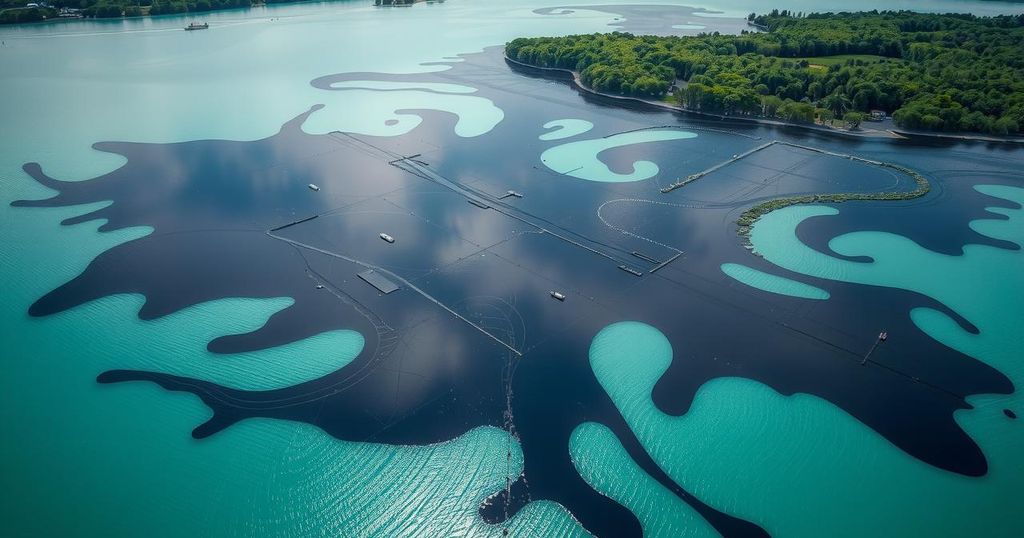Ecuador Faces Environmental Emergency as Oil Slick Contaminates Rivers
Ecuador is battling a significant oil spill caused by a ruptured pipeline, affecting thousands and resulting in a declared environmental emergency. The spill has spread to multiple rivers, compromising the water supply for half a million residents. Petroecuador is undertaking recovery efforts while ships deliver potable water to the affected area.
Ecuador is currently facing a significant environmental crisis due to a spreading oil slick that has contaminated multiple rivers, leaving thousands of residents without drinking water. This situation arose after a spill last Thursday, likely caused by a landslide that ruptured a major oil pipeline in the country’s northwest, releasing tens of thousands of barrels of crude oil into the environment.
Initially, the spill began in the Esmeraldas River and has since spread to at least four additional waterways. According to Esmeraldas Mayor Vicko Villacis, approximately half a million people have been affected, particularly in terms of access to potable water, which is critical in a region that heavily depends on rivers for their water supply. In response to this urgent situation, the government has declared an environmental emergency in the province, which is home to a wildlife refuge housing over 250 species of animals.
State-owned Petroecuador, responsible for managing the damaged pipeline, is deploying tanker trucks in efforts to recover as much of the spilled oil as possible, particularly in areas where residents engage in subsistence fishing. While Petroecuador has not provided an exact estimate of the oil spill, Mayor Villacis has suggested that approximately 200,000 barrels may have leaked into the environment.
To address the immediate drinking water crisis, three ships are set to deliver potable water to the Esmeraldas region starting on Tuesday. Ecuador’s oil production was around 475,000 barrels per day in 2024, making oil one of its key exports. Notably, the ruptured pipeline is part of the Trans-Ecuadorian Pipeline System (SOTE), which is capable of transporting up to 360,000 barrels per day over a distance of 500 kilometers (310 miles) from the Amazon to the Pacific coast.
In Rocafuerte, a nearby fishing village, AFP reported seeing numerous boats and fishing nets tainted with black oil. A resident, Luis Cabezas, expressed deep concern over the impact of the spill, stating, “If it continues like this, we won’t be able to fish anymore.”
In conclusion, Ecuador is confronting a serious environmental emergency due to a major oil spill causing widespread disruption and threatening local water supplies. Thousands have lost access to drinking water, and the ecological damage could be substantial given the spill’s reach across multiple rivers. The government’s response, including recovery efforts and water deliveries, highlights the urgent need for intervention to mitigate the effects of this crisis on the community and local wildlife.
Original Source: www.hendersondispatch.com




Post Comment